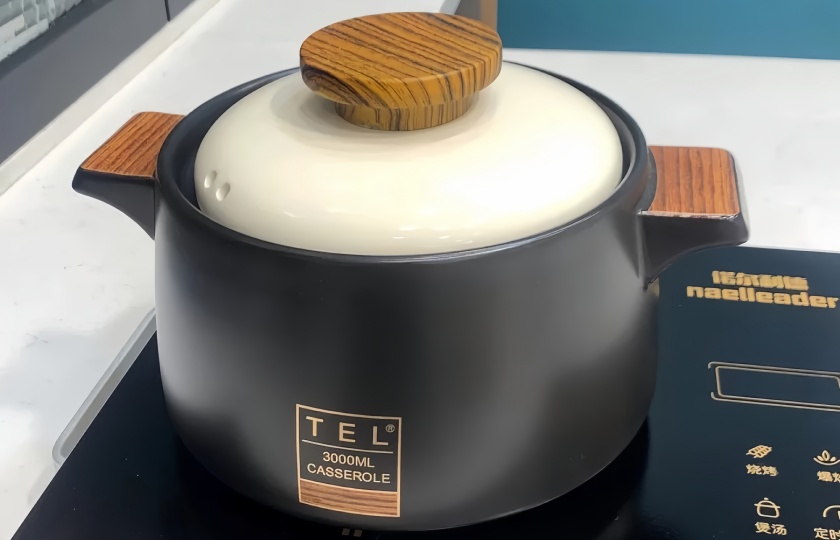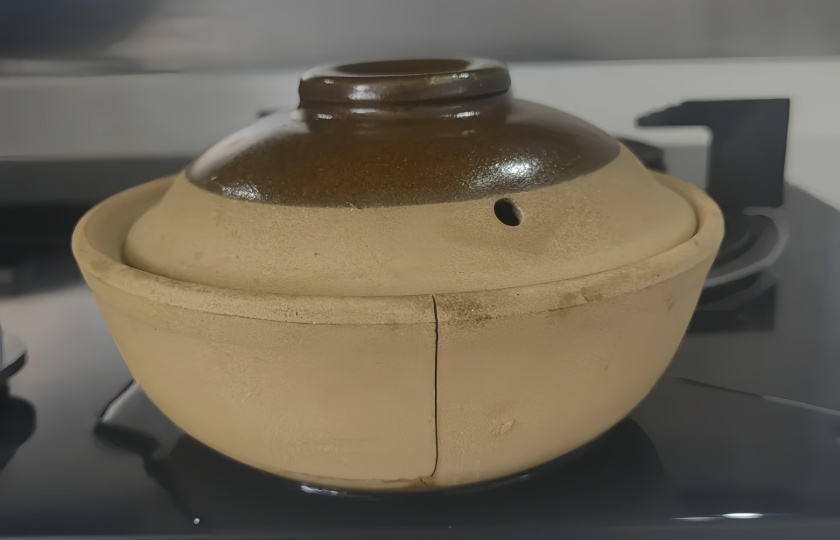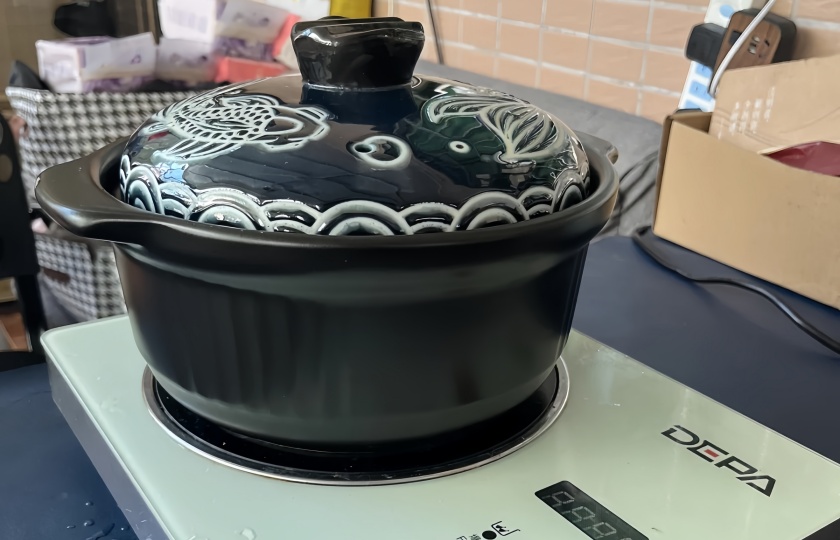Can I Cook Clay Pot Rice on an Induction Stove: A Modern Cooking Query

When modern technology meets traditional delicacies, what kind of spark will be created? Cooking casserole rice with an induction cooker is not only a matter of cooking skills, but also a perfect fusion of tradition and modernity. Lets uncover this mystery that troubles millions of families.
Can I cook casserole rice on an induction cooker?
Sure you can. Because it has been tried. However, choosing the pot is crucial. You need to choose a casserole with a flat bottom and one that is suitable for an induction cooker.
Before using it, soak the casserole in water for 15 minutes and then place it on the induction cooker after drying. At the same time, the rice also needs to be processed in advance. Wash it and soak it for 20 to 30 minutes to prepare for cooking.
There are particularities in the cooking process. Put the rice and water into the pot according to the ratio of 1:1.1 of rice to water. For example, one cup of rice corresponds to 1.1 cups of water. First boil the water on medium-high heat and pay attention during this period. After the water boils, turn to medium-low heat and simmer for 15 minutes, and then turn to low heat and cook for another 5 minutes. Controlling the heat in this way can make the rice cooked thoroughly and not burn the bottom.
After cooking, dont be in a hurry to open the pot. Turn off the heat and simmer for 10 minutes, and then you can get crispy crust. Although it is relatively easy to control the fire with a traditional gas stove, when cooking casserole rice with an induction cooker, as long as you remember these key points and patiently adjust the temperature, you can not only protect the casserole but also cook delicious food.
How do I prevent the clay pot from cracking on an induction stove?
Before use, the process of seasoning the pot is essential. Before using a new casserole for the first time, soak it in water for 15 minutes, then dry it and add water and rice and heat it on low heat. Before each use, also soak it in warm water to gradually adapt to temperature changes and increase its tolerance.
When in use, temperature control is crucial. Never place an empty pot on the induction cooker for heating, and avoid sudden temperature changes. Start from a low setting and slowly increase the temperature. During cooking, it is strictly forbidden to suddenly add cold water or cold ingredients to prevent the risk of cracking due to excessive temperature difference.
After use, the maintenance step should not be underestimated. Be sure to wait until the casserole is completely cooled before cleaning it. Never rinse a hot pot with cold water. When storing, keep it dry and place it in a ventilated place. Once a small crack is detected in the casserole, for safety reasons, it should be stopped from being used to avoid bursting during heating. By following these points and taking good care of the casserole, we can effectively extend its service life.

What's the ideal temperature setting for cooking clay pot rice on induction?
At the beginning, adjust the power to medium-high heat of 800-1000 watts. At this stage, it takes about 5-6 minutes to quickly heat the water in the pot to boiling and form dense bubbles. But never rashly use the maximum setting to prevent damage to the casserole.
After the water boils, immediately lower the temperature to medium-low heat of 400-600 watts. This period of about 15 minutes is the core period of cooking. This temperature can ensure that the rice is heated evenly and fully absorbs moisture. During this period, resist the urge to open the lid to avoid the escape of hot air and affecting the taste.
At the end, reduce the power to 200-300 watts and continue for 5 minutes. Then turn off the heat and let it sit for 10 minutes. This step can make the rice more fluffy and a crispy rice crust will form at the bottom. The temperature needs to be carefully controlled throughout the process. Don't be impatient. Only in this way can a pot of fragrant, glutinous and delicious casserole rice with attractive rice crust be cooked.
Why does my clay pot rice get burnt at the bottom when using induction?
There are usually the following reasons:
First, poor control of temperature and duration. The bottom of the induction cooker is heated intensively. Prolonged cooking at high temperature is prone to burning the pot. It should be adjusted reasonably. Medium temperature can be used in the early stage of cooking. After 12 to 15 minutes, be sure to turn to low heat for the final stage. This can prevent the bottom rice from scorching due to overheating.
Second, incorrect water-to-rice ratio. If there is too little water, the rice is not cooked yet and the bottom is already scorched. Generally, it is advisable to follow a water-to-rice ratio of 1:1.1 to 1:1.2, and it needs to be fine-tuned according to the type of rice. At the same time, soaking the rice for 20 minutes in advance can improve its degree of doneness and reduce the chance of burning.
Third, untimely adjustment of heat. If there is a slight hissing sound from the bottom of the pot, it indicates that the temperature is too high and it is necessary to turn to low heat immediately. If you want to make rice crust but without burning. It is recommended to use the minimum heat to let the bottom of the pot naturally form a crispy crust and keep the whole pot of rice intact.

What pots cannot be used on induction?
Pots made of pure aluminum, pure glass, and pure ceramics are not suitable. Because induction cookers heat by magnetic field induction, and these materials do not contain components that can interact with the magnetic field, so they cannot generate heat. The same is true for copper pots and silver pots. They cannot get hot at all when placed on an induction cooker.
Pots with uneven bottoms are also not suitable. Even if its material is magnetically conductive, if the bottom is uneven, such as some frying pans or pans that have deformed after long use, when used on an induction cooker, there will be uneven heating and may also damage the panel of the induction cooker.
We should choose those pots clearly marked "suitable for induction cookers", such as stainless steel pots, enamel pots with a magnetic conductive layer at the bottom, or pots specially designed for induction cookers. There is a simple way to judge. Use a magnet to attract the bottom of the pot. If it can be attracted, then this pot can be used on an induction cooker.
What's the best way to season a new clay pot for induction cooking?
First, soak the new casserole thoroughly in clean water for 30 minutes to make it fully absorb moisture. Then rinse the inside with clean water and dry the bottom and outside. Put an appropriate amount of rice into the pot and add water. The water should exceed the rice by 1-2 centimeters. The rice here can help the pot body gradually adapt to temperature changes.
Place it on the induction cooker and start heating with the minimum heat first. After about 5 minutes, turn to medium-low heat. When the water boils, continue to cook on low heat for about 15 minutes. During this process, you need to pay attention at all times. When the water level is too low, warm water should be added in time. Never let the pot be in a dry burning state to prevent damage.
Finally, turn off the heat. Wait until the pot is completely cooled. Pour out the rice and water and wash it with warm water. Although this seasoning step seems complicated, it can greatly reduce the risk of cracking of the casserole and enhance its durability. After this seasoning treatment, the casserole can be safely put into normal cooking use.























